The King's Pilgrimage
Published
Today, we are used to seeing war memorials in towns and villages across the country, but a hundred years ago, remembrance was a new and revolutionary idea.

During the First World War, hundreds of thousands of soldiers had died on the battlefield. Many bodies were left, unretrievable, in no man’s land. Others were buried by comrades: a simple wooden cross marking their grave.
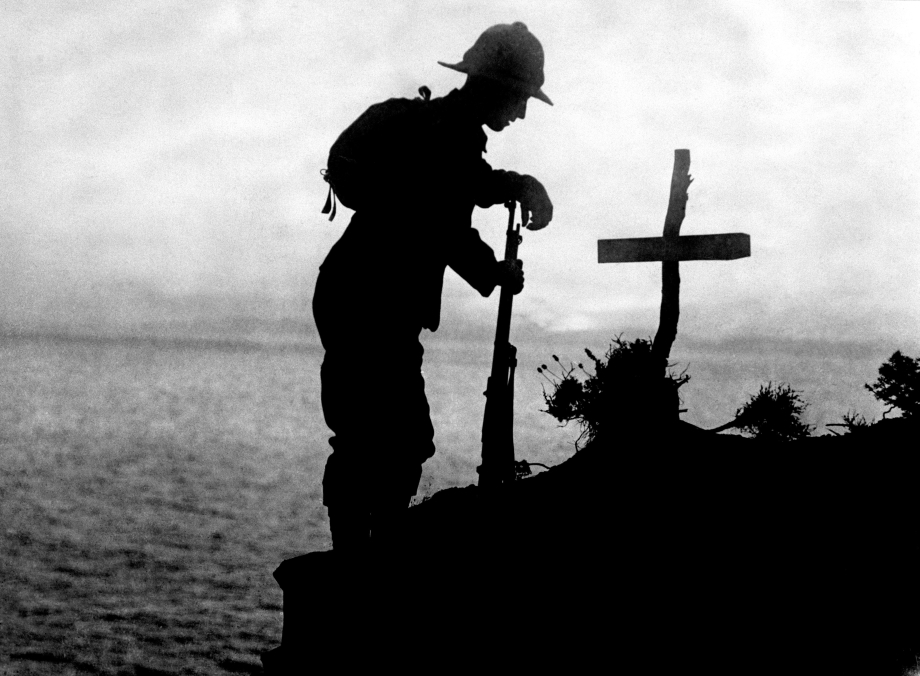
The Commonwealth (then Imperial) War Graves Commission was set up with the mammoth task of commemorating every soldier who died in WW1.
There was doubt over whether these cemeteries would be well received, with many relatives wanting their loved ones’ bodies repatriated rather than commemorated overseas. However, the first ‘experimental’ cemeteries were favourably reported by the press in 1920, and construction began on the larger cemeteries we know today.
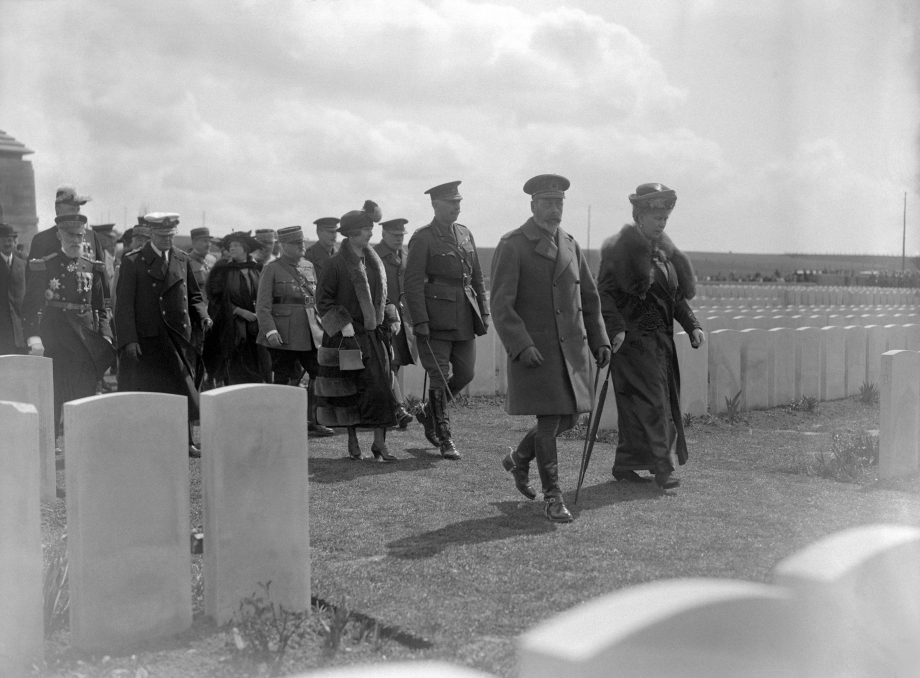
Relatives of the fallen began visiting the battlefields and cemeteries in their tens of thousands to pay their respects, and it was as part of this wider pilgrimage that King George V and Queen Mary visited in May 2022.
As part of a State Visit to Belgium, the King undertook a three-day tour of the battlefield cemeteries accompanied by Sir Fabien Ware, Vice-Chairman of the IWGC, Field Marshal Douglas Haig and Admiral David Beatty. This three day tour soon became known as ‘The Kings Pilgrimage’.
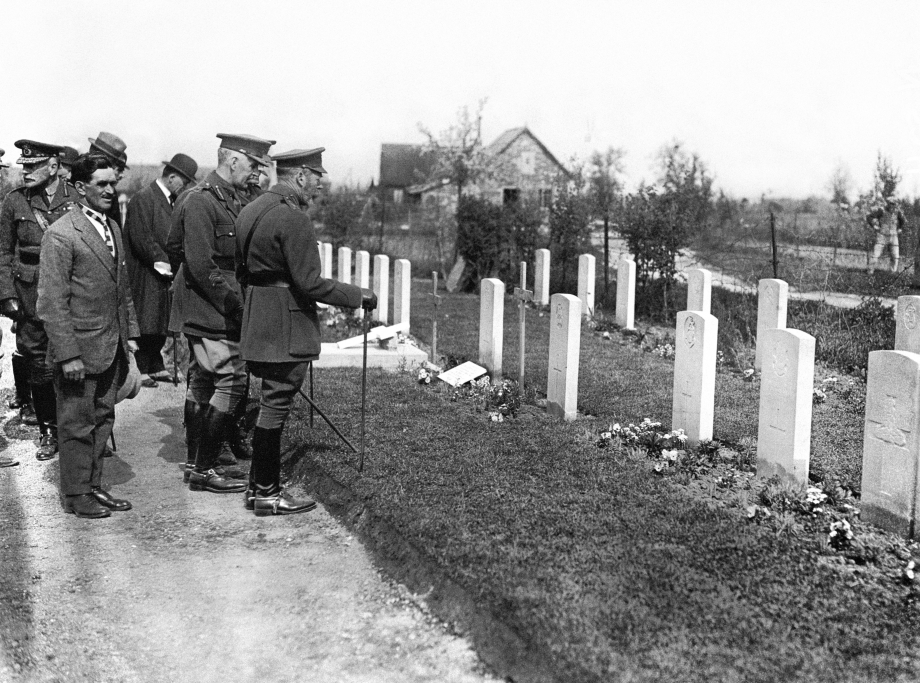
The King was issued with passes to allow him to visit the war graves in 1922. These passes were to enable close relatives to visit the grave of a fallen family member in France and Belgium without the need for a passport. It is not clear why two separate passes were issued other than the King is wearing the uniform of the Royal Navy in one and the Army in the other.
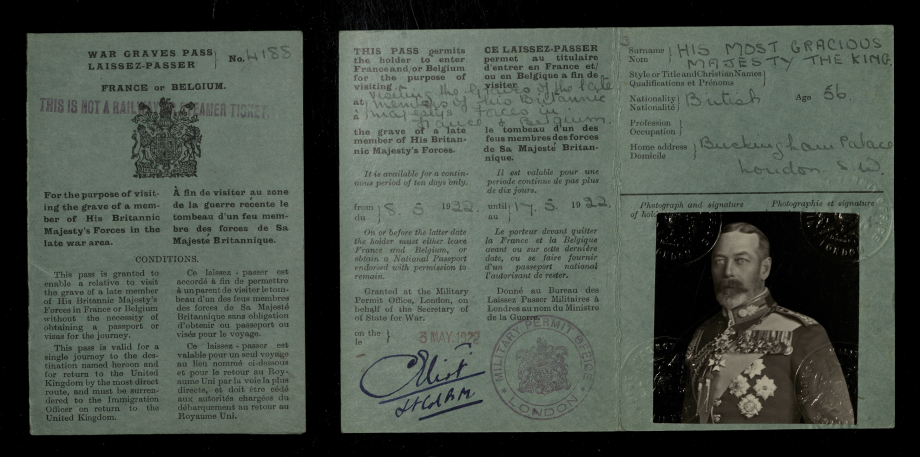
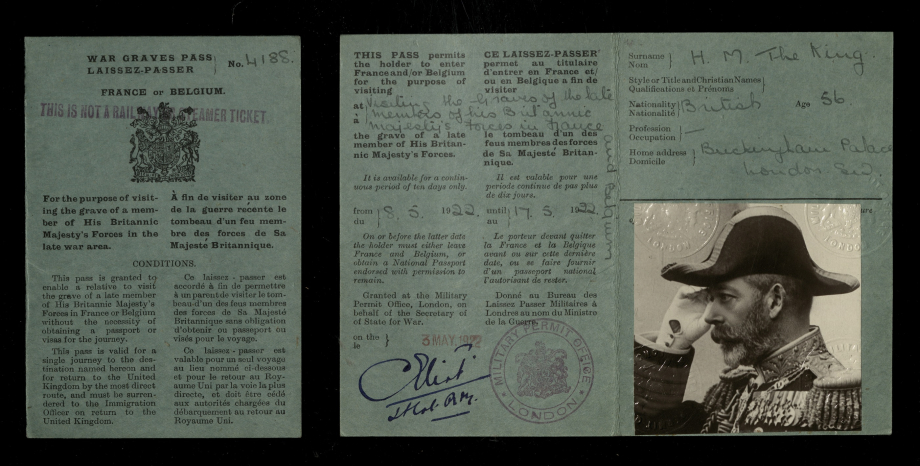
On 11 May 1922, King George V recorded his visits to military cemeteries in Belgium in his diary:
‘I left at 9.0 in my train with Haig & Sir Fabien Ware (Permanent Vice Chairman of the Imperial War Graves Commission), Fritz, Wigram & Seymour for Zeebrugee where I arrived at 11.0. Went to see the German cemetery where some English are buried, visited the mole & left at 12.40. Luncheon in the train. Arrived at Zonnebeke at 2.30. Left in motors & visited the British cemeteries at Tyne Cot, Ypres, Vlamertinghe, Hop Store, Brandhoek, Poperinghe & Lijssenthoek. Joined the train at Poperinghe & left at 6.10. At each I was received by the Mayor & a crowd of people. The cemeteries are very well arranged & looked after by ex service men under the Commission. Very interesting passing through all the battle area, nearly all the houses have been rebuilt…’
These maps show the location of the IWGC cemeteries visited by King George V on 12 and 13 May 1922. The cemeteries at Tyne Cot, Poperinghe, Meercut Indian Cemetery and Terlincthun are shown above.
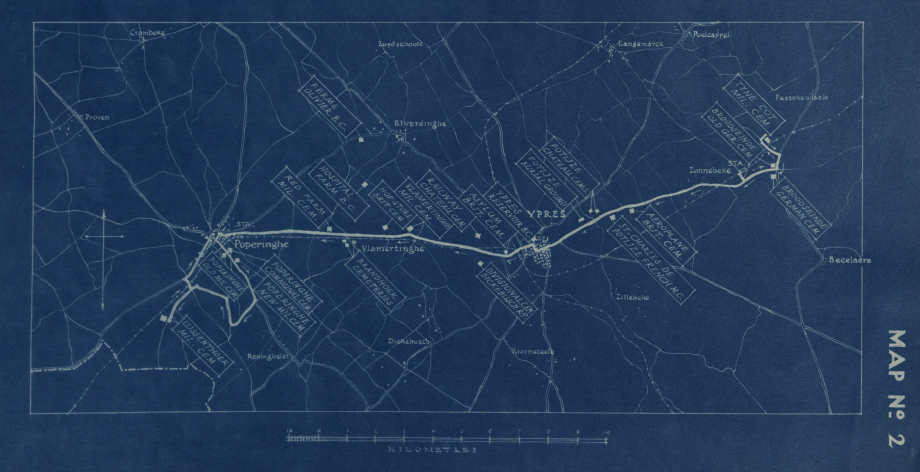

On 13 May, after visiting the Meerut cemetery, where Indian soldiers are buried, King George V travelled to Terlincthun cemetery, where he was joined by Queen Mary and the Earl and Countess of Athlone. Queen Mary, herself laying a wreath at the stone of remembrance, recorded the events in her diary:
‘Motored to the British soldiers cemetery at Terlincthun where we were met by the members of the War Graves Commission & General Castelmau etc. We walked to the cross where G laid a wreath & then made a charming speech, General Castelmau ditto. Made a short tour in the cemetery. A very impressive but upsetting ceremony.’
As our dead were equal in sacrifice, so are they equal in honour, for the greatest and the least of them have proved that sacrifice and honour are no vain things but truths by which the world lives
At Terlincthun cemetery the King made a speech stating that: “…we remember, and must charge our children to remember, that, as our dead were equal in sacrifice, so are they equal in honour, for the greatest and the least of them have proved that sacrifice and honour are no vain things but truths by which the world lives…and I fervently pray that, both as nations and individuals, we may so order our lives after the ideals for which our brethren died that we may be able to meet their gallant souls once more, humbly but unashamed.”
In 1922, in recognition of the King’s three day tour to the war cemeteries, Rudyard Kipling penned a poem entitled ‘'The King's Pilgrimage'’. This poem was printed in “The King’s Pilgrimage”, a book written by Frank Fox in commemoration of the tour, and published by Hodder & Stoughton. Proceeds from the sale of this book, on the King’s suggestion, were distributed to various organisations who assisted relatives visiting the IWGC’s cemeteries abroad. In addition, Hodder & Stoughton donated their working costs for the publication of the book to the overall total raised.
King George V wrote a forward to the book:
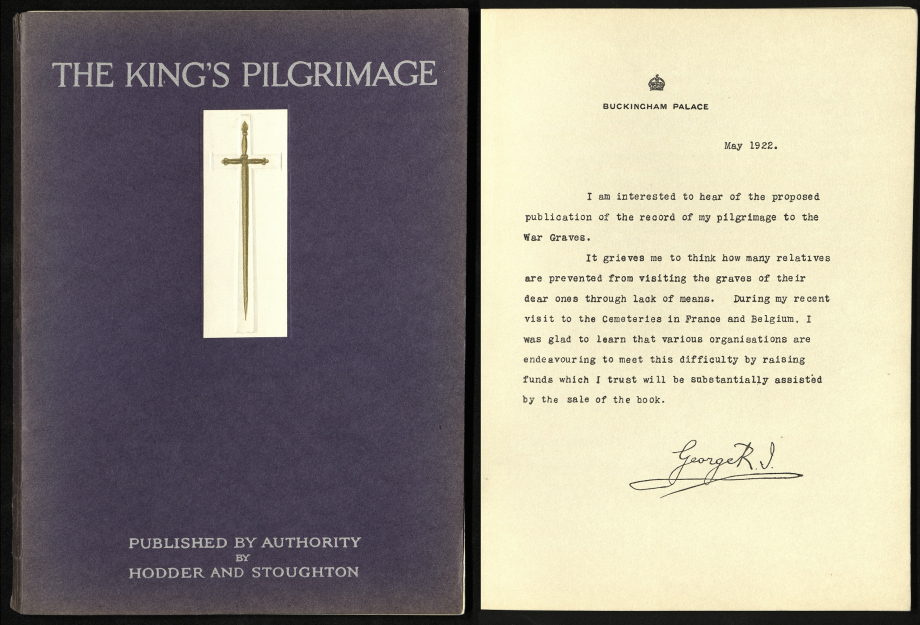
The King’s Pilgrimage by Rudyard Kipling
Our King went forth on pilgrimage
His prayers and vows to pay
To them that saved our heritage
And cast their own away.
And there was little show of pride,
Or prows of belted steel,
For the clean-swept oceans every side
Lay free to every keel.
And the first land he found, it was shoal and banky ground -
Where the broader seas begin,
And a pale tide grieving at the broken harbour-mouth
Where they worked the death-ships in.
And there was neither gull on the wing,
Nor wave that could not tell
Of the bodies that were buckled in the life-buoy's ring
That slid from swell to swell.
All that they had they gave - they gave; and they shall not return,
For these are those that have no grave where any heart may mourn.
And the next land he found, it was low and hollow ground -
Where once the cities stood,
But the man-high thistle had been master of it all,
Or the bulrush by the flood.
And there was neither blade of grass,
Nor lone star in the sky
But shook to see some spirit pass
And took its agony.
And the next land he found, it was bare and hilly ground -
Where once the bread-corn grew,
But the fields were cankered and the water was defiled,
And the trees were riven through.
And there was neither paved highway,
Nor secret path in the wood,
But had borne its weight of the broken clay
And darkened 'neath the blood.
Father and mother they put aside, and the nearer love also -
An hundred thousand men who died whose graves shall no man know.
And the last land he found, it was fair and level ground
About a carven stone,
And a stark Sword brooding on the bosom of the Cross
Where high and low are one.
And there was grass and the living trees,
And the flowers of the spring,
And there lay gentlemen from out of all the seas
That ever called him King.
'Twixt Nieuport sands and the eastward lands where the Four Red Rivers spring,
Five hundred thousand gentlemen of those that served their King.
All that they had they gave - they gave -
In sure and single faith.
There can no knowledge reach the grave
To make them grudge their death
Save only if they understood
That, after all was done,
We they redeemed denied their blood
And mocked the gains it won.


